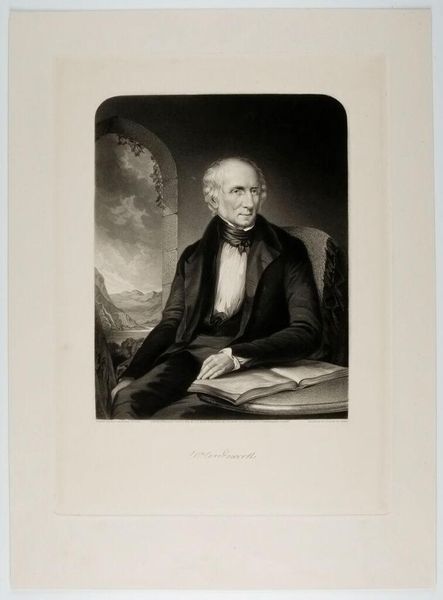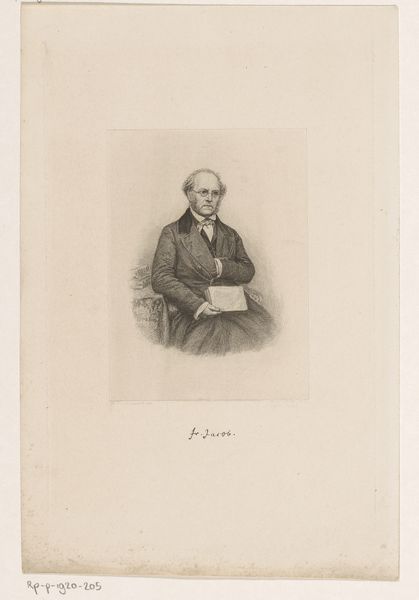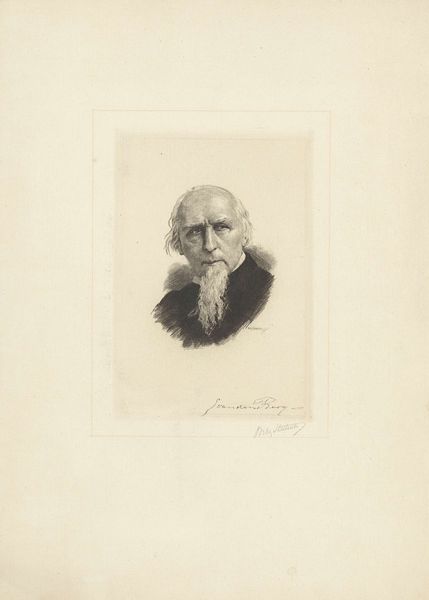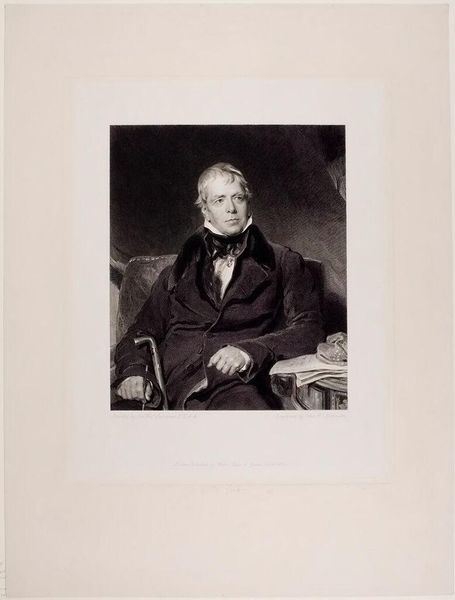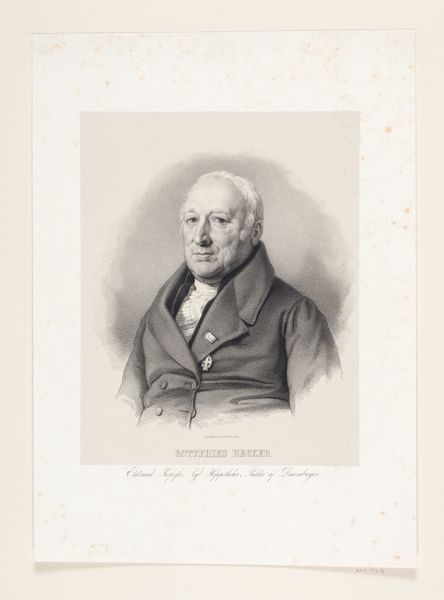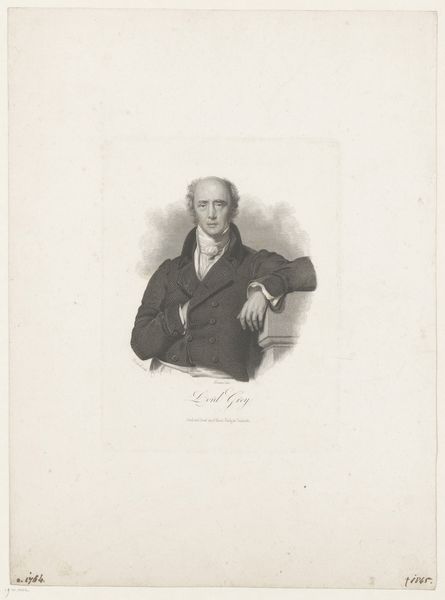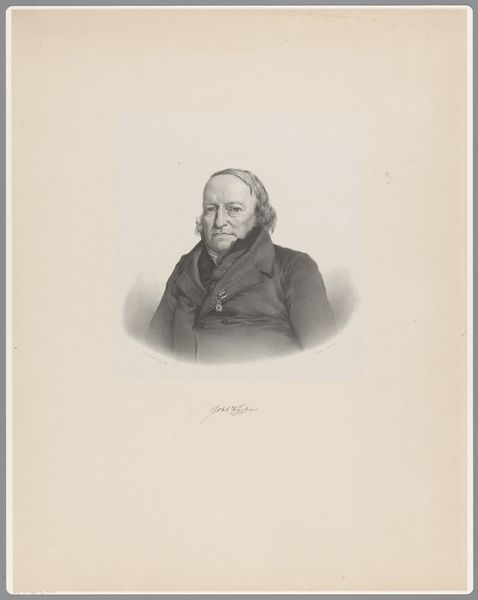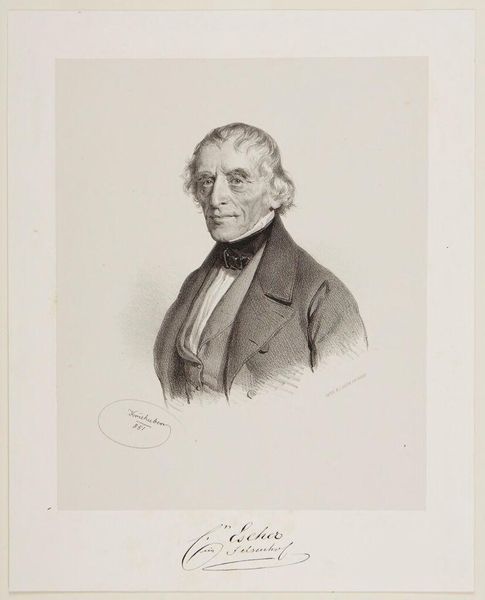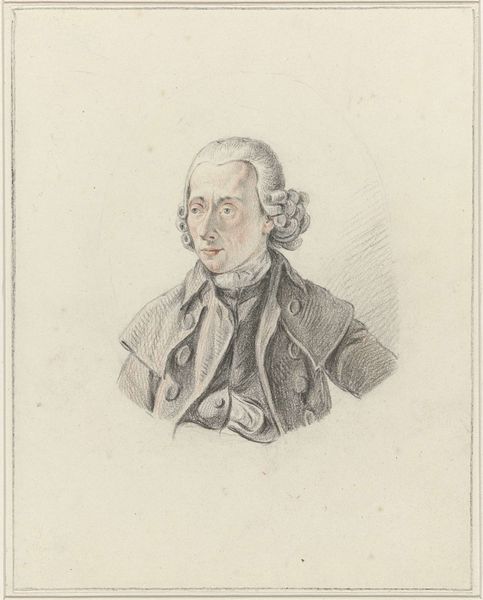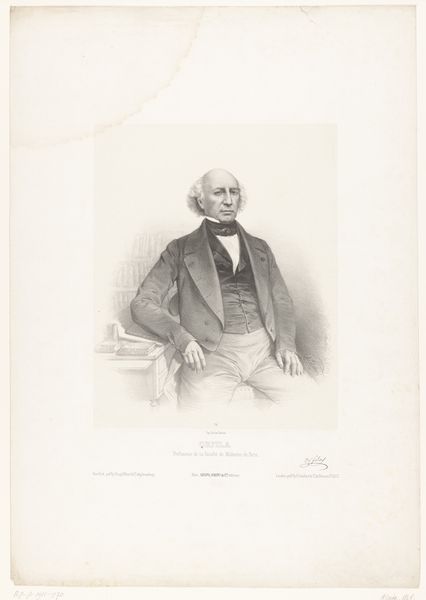
Copyright: CC0 1.0
Curator: This is Edward McInnes' rendering of William Wordsworth, likely from around the 1840s, held here at the Harvard Art Museums. Editor: The portrait has a somber quality; the subject is gazing out, lost in thought, as if contemplating nature or perhaps his own mortality. Curator: It's fascinating to consider the production of such images and the labor involved. The printing press allowed for wider distribution of portraits, but skilled engravers were still vital in creating these likenesses. Editor: Yes, and Wordsworth, during the Romantic era, represented a specific kind of sensibility. The image itself becomes a symbol, a representation of the Romantic poet, the 'sage of Rydal Mount'. Curator: Exactly. Consider the social function of this print. It brings Wordsworth into homes, solidifying his presence beyond his immediate circle. Who purchased it? How was it displayed? These details affect our reading of the work. Editor: The backdrop suggests a landscape, echoing Wordsworth's poetic focus. It almost creates a halo effect around his head, emphasizing his role as an interpreter of nature's divine language. Curator: I'm drawn to the textures created in the engraving – how the varying line weights suggest the depth and folds in his coat, and the subtle gradations used to shape his face. Editor: Ultimately, it is a powerful image, one that encapsulates the cultural significance of Wordsworth. Curator: A telling artifact of its time, revealing how value and image are both constructed.
Comments
No comments
Be the first to comment and join the conversation on the ultimate creative platform.
